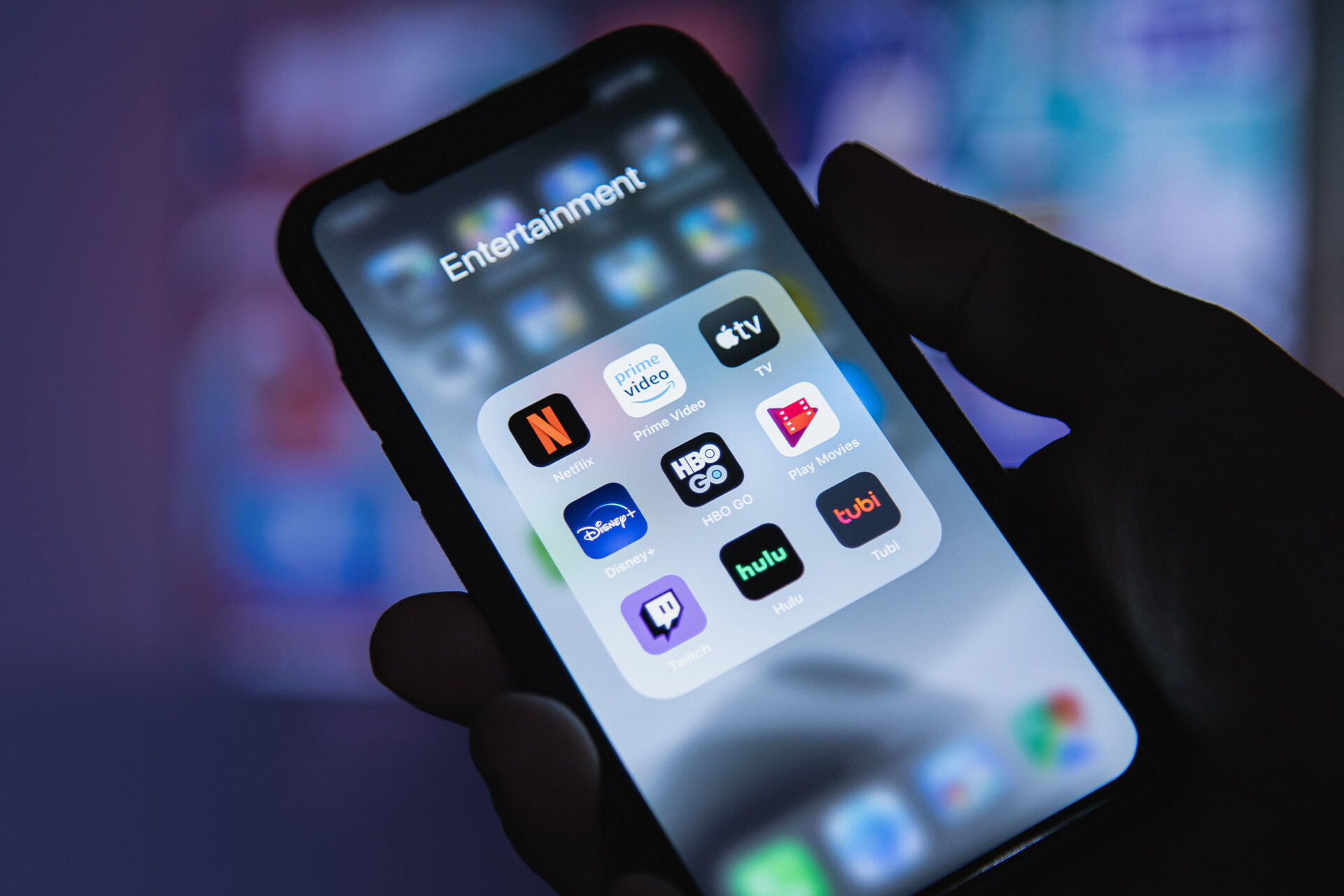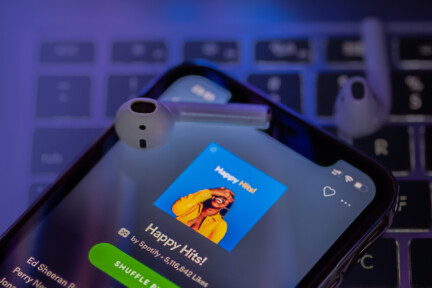As we reach 2024, the $2.3 trillion media and entertainment industry stands at a pivotal crossroads. The digital revolution has not just arrived; it’s reinventing the landscape.
But what’s next? How will emerging digital technologies redefine the way we consume media? Are you ready to adapt to the seismic consumer behavior and technology shifts? This article is your compass in navigating these transformative times.
In this exploration, we’ll delve into:
- Emerging Technologies: The cutting-edge tools reshaping the industry.
- Consumer Behavior Shifts: Insights into the evolving preferences of tomorrow’s audience.
- AI’s Role in Content Personalization: How AI is revolutionizing user experiences.
- Streaming Service Evolution: The next phase in digital content consumption.
- Interactive and Immersive Experiences: A dive into the future of engaging media.
- Data-Driven Decision Making: Leveraging analytics for strategic advantage.
- Miquido’s Innovative Approaches: Real-world examples from a leader in tech solutions.
P.S., at Miquido, we’re not just following these trends; we’re building them. Our team of custom software professionals leverages technology to build captivating experiences in the media and entertainment industry. Stay tuned as we unfold how Miquido’s expertise leads the charge into 2024.
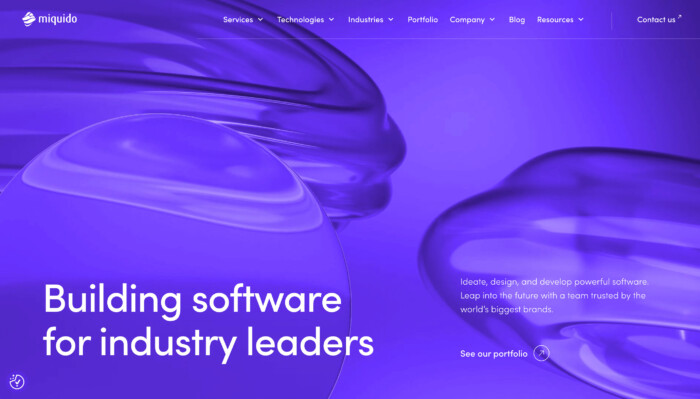
Emerging Technologies in the Media and Entertainment Sector
The media and entertainment industry is currently transforming, fueled by the advent of virtual and augmented worlds of groundbreaking technologies. According to a PwC report, AI’s contribution to the media and entertainment sector could reach $15.7 trillion by 2030. This growth indicates how AI, Gen AI, and AR are reshaping the digital media entertainment industry.
- AI, Generative AI (Gen AI), and Augmented Reality (AR) are at the forefront of this revolution. These technologies are reshaping how content is created, distributed, and experienced. For instance, AI and Gen AI are revolutionizing content personalization and creation. They enable platforms to deliver tailored experiences and assist in creating new, innovative content.
Example: Spotify‘s use of AI for music recommendations is a prime example of content personalization. Their technology analyzes listening habits to suggest new songs and playlists, offering a highly individualized user experience. - Augmented Reality (AR) is another game-changer, offering immersive experiences that blend digital elements with the real world.
Example: Snapchat‘s AR filters are a popular example of AR in social media. They provide interactive, fun experiences that blend digital elements with the real world, transforming how users engage with the app.
Miquido’s Role in Emerging Technologies: Miquido’s projects vividly illustrate this technological embrace. Take our music app development project, for instance, where we harnessed AI to create rich, immersive audio experiences and global audience reach.
Here, we demonstrate Miquido’s expertise in using cutting-edge digital innovations to enhance user engagement and build new revenue streams. We bring this expertise to all of our work with companies in media, music, and entertainment, showcasing how AI can enhance user engagement and drive innovation.
How Consumer Behavior Is Changing in 2024
As we approach 2024, media companies are witnessing a significant shift in consumer behavior. The digital era has changed what consumers watch and how they watch it. Preferences increasingly lean towards personalized, on-demand content, a trend amplified by the global pandemic’s lasting impact on consumption habits.
Here are some of the key trends:
- Personalization and On-Demand Content: There’s a growing preference for personalized, on-demand content driven by advancements in AI and machine learning. Consumers now expect media that caters to their tastes and schedules moving away from traditional, scheduled programming.
- Surge in Streaming Service Subscriptions: Streaming services have recently increased in popularity. Deloitte reports that over 76% of U.S. consumers subscribe to at least one streaming service, highlighting the shift from conventional TV to digital platforms.
- Interactive and Engaging Media Experiences: The demand for interactive content, such as virtual reality and augmented reality experiences, is on the rise. Consumers seek more than passive viewing; they want engaging, immersive experiences that blur the lines between viewer and content.
- Rise of Multi-Platform Consumption: Consumers increasingly access content across multiple devices and platforms, leading to a more integrated media experience. This trend reshapes how we distribute and consume content, focusing on seamless, cross-platform accessibility.
These shifts in consumer behavior are not just redefining the media and entertainment industry; they’re setting the stage for a new era of digital consumption, where personalization, interactivity, and multi-platform accessibility are key.
Case Study: Miquido’s Approach to Adapting These Shifts
Miquido’s solutions are tailored to meet the evolving needs of today’s audience. By anticipating these shifts and innovating accordingly, Miquido doesn’t just keep pace with the entertainment industry but sets new standards in user engagement and satisfaction.

A prime example of our innovative approach is developing Timesheets:
- Timesheets is an AI-powered time-tracking tool developed by Miquido for collaborative, multitasking teams.
- It’s designed to calculate working hours, log time spent on each activity or project, and generate detailed time reports.
- We understand the importance of building AI into practical, everyday business solutions, so Timesheets integrates with familiar tools like plugins, chatbots, and voice assistants (like Alexa, Siri, and Google Assistant).
By implementing Generative AI in software development, Miquido helps clients create smarter applications, tailor-made for specific end-user needs:
- Generating customized content to boost engagement
- Automating repetitive tasks to increase business productivity
- Improving app personalization for software efficiency
Our application of Generative AI in projects like Timesheets is just one way we innovate in the digital landscape. Miquido doesn’t just adapt to shifts in the media and entertainment industry but actively reshapes it.
The Role of AI in Content Personalization
Integrating AI in content personalization is not just a trend; it’s a revolution reshaping the media and entertainment landscape.
- Statistically, AI-driven personalization can lead 78% of buyers to become repeat shoppers if a brand deals them with personalization, as highlighted in a McKinsey report.
- AI algorithms delve deep into user data, scrutinizing all user digital data, viewing habits, and engagement patterns to offer tailor-made content suggestions.
- Personalization elevates user satisfaction and significantly boosts viewer engagement and retention rates.
But it’s important to note that the broader implications of AI in content personalization extend far beyond individual cases. Globally, AI is reshaping how content is curated and consumed, offering viewers a more immersive, personalized experience. It won’t be enough to simply respond to user preferences — you’ll need to anticipate them and create customized content ahead of time.
Evolution of Streaming Services: A Deeper Dive
The streaming service industry is not just growing; it’s evolving, marked by several transformative trends that are reshaping the way content is consumed:
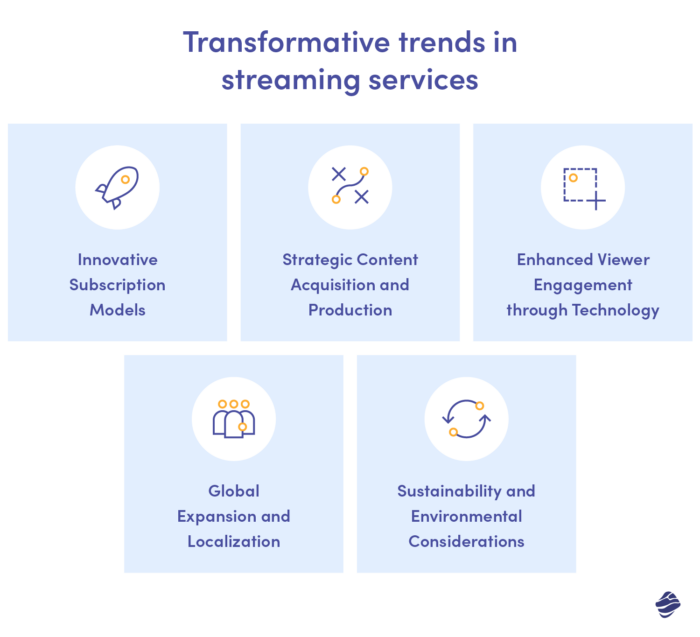
- Innovative Subscription Models: The evolution of subscription models is notable. Beyond ad-supported or premium tiers, services are experimenting with pay-per-view options, bundled services with other digital offerings, and even loyalty programs. This diversification caters to a broader audience and addresses varying consumer demands for flexibility and value.
- Strategic Content Acquisition and Production: The exclusive and original content race intensifies. Streaming platforms invest heavily in acquiring unique content and producing original series and films to differentiate themselves. The success of platforms like Netflix and Amazon Prime, which have produced award-winning original content, is a testament to the effectiveness of this strategy.
- Enhanced Viewer Engagement through Technology: Streaming services leverage cutting-edge technologies like AI and machine learning to personalize content recommendations, improve user interfaces for easier navigation, and incorporate interactive features like in-app voting or choose-your-own-adventure style content. This technological integration is crucial for driving viewer engagement and retention.
- Global Expansion and Localization: Streaming services are expanding their reach globally, which involves localizing content and interfaces for different regions. This broadens their audience base and helps them understand and cater to regional preferences and cultural nuances.
The global streaming market is expected to reach $223.98 billion by 2028, according to the Global Video Streaming Market Report 2021-2028, highlighting the importance of localization in content and user interfaces to cater to diverse audiences. - Sustainability and Environmental Considerations: As digital consumption increases, some platforms are also considering their environmental impact, looking at ways to reduce digital carbon footprints and promote sustainable viewing habits.
How is Miquido Evolving in this Ever-changing Ecosystem? Miquido’s expertise in custom app development goes beyond simply crafting user-friendly interfaces to access video content; it’s about integrating these industry shifts into a cohesive, engaging viewer experience.
Miquido’s approach to developing streaming applications blends user-centric design, technological innovation, and strategic content alignment, ensuring streaming services meet and exceed modern viewer expectations.
Rise of Interactive and Immersive Experiences
Interactive and immersive experiences are driving a profound transformation in the media and entertainment industry. Consumers increasingly seek more engaging and participatory content in a shifting media landscape. It’s given rise to a new era where passive consumption is evolving into active engagement, opening up new possibilities for content creators and innovators.
- Interactive Media’s Growth Trajectory: Interactive media, characterized by its user-driven nature, is experiencing exponential growth. Studies show that interactive content generates 4 to 5 times more engagement than static content, highlighting a significant shift in consumer preferences toward participatory experiences.
- Virtual and Augmented Reality’s Influence: The growth of augmented and virtual reality technologies has been pivotal in driving this evolution. With the VR market expected to reach $71.2 billion by 2028, businesses are exploring leveraging these technologies for immersive storytelling and brand experiences.
Miquido’s Expertise in Action: Want to see how Miquido brings interactive and immersive projects to life? See how we push the boundaries of what is possible in digital experiences using social media platforms and next-gen technology, all in our portfolio.
Miquido’s Tips for Success in the Media and Entertainment Industry
Success lies in technical proficiency and understanding the pulse of consumer expectations. Our case studies demonstrate the importance of aligning interactive content with evolving consumer preferences.
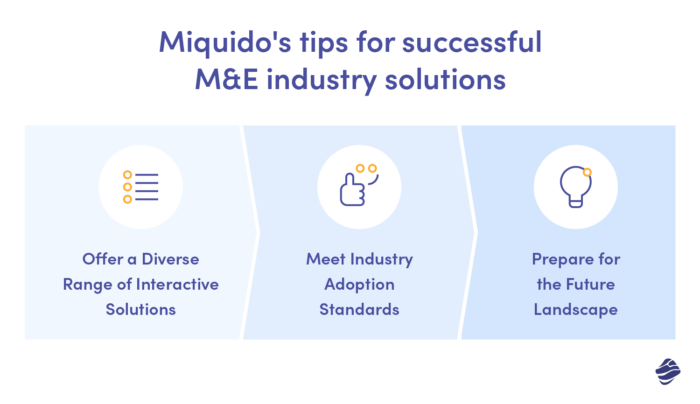
- Offer a Diverse Range of Interactive Solutions: Whether it’s creating interactive mobile apps, virtual reality experiences, or gamified content, Miquido demonstrates how these innovations can be harnessed to elevate user engagement and deliver memorable experiences.
- Meet Industry Adoption Standards: The success stories presented in the case studies highlight the growing demand for interactive and immersive content across diverse industries. In a recent survey, 78% of businesses reported that incorporating interactive content is critical to their marketing strategy.
- Prepare for the Future Landscape: Emerging technologies like extended reality (XR) are expected to shape the future of interactive and immersive experiences. Businesses should stay agile and explore opportunities to integrate these technologies into their content strategies.
Data-Driven Strategies in Media and Entertainment
Data analytics has become a linchpin for content creation and marketing in the media and entertainment sector. It’s a paradigm shift from gut-driven decisions to insights-backed strategies.
Impact on Content Creation:
- Audience Understanding: Data analytics offers deep insights into audience preferences, behaviors, and engagement patterns. For instance, Netflix uses viewing data to decide what kind of content to produce and which shows to renew.
- Genre Popularity and Trends: By analyzing digital media industry trends, studios can identify which genres or themes are more likely to resonate with audiences. This approach significantly reduces the risks associated with content production.
- Targeted Marketing: Data-driven strategies enable tailored marketing campaigns, ensuring content reaches the right audience. For example, Disney+ leverages viewer data to personalize marketing, enhancing subscriber acquisition and retention.
Miquido’s Approach to Data-Backed Decision Making:
Miquido helps clients stay ahead of the curve, making informed decisions that align with consumer demands and dynamics of the latest digital and social media posts and trends industry trends.
- Personalized Experience Development: Miquido uses data analytics to understand user preferences, helping clients create more personalized and engaging content.
- Strategic Marketing Campaigns: Miquido assists in developing marketing campaigns informed by user data, increasing campaign effectiveness and ROI.
- Innovative Solutions: Through our projects, Miquido has demonstrated how data can be utilized to innovate and improve the user experience through personalized app interfaces or content suggestions.
Data-driven strategies are transforming the media and entertainment sector, from content creation to distribution and marketing. Miquido’s expertise in data analytics puts us at the forefront, offering solutions that drive success in this ever-evolving landscape.
Real-World Examples of Innovative Technologies in Media and Entertainment Businesses
Netflix: Revolutionizing Streaming with AI and ML
Overview
- Company: Netflix
- Industry: Streaming Media
- Innovations: AI and Machine Learning Integration
AI in Action
Netflix’s technological transformation revolves around AI and Machine Learning (ML). The company uses these technologies for various purposes, from optimizing streaming quality to enhancing user experiences.
- Bandwidth Optimization: Netflix leverages ML to analyze viewers’ past data, enabling dynamic bandwidth adjustment. This ensures optimal streaming quality, adapting in real-time to internet speeds and device capabilities.
- Content Personalization: Utilizing content metadata, Netflix offers personalized viewing suggestions, targeting specific user preferences and behaviors. This tailored approach is crucial for user retention and satisfaction.
Impact
Netflix’s implementation of AI and ML has been transformative, setting new standards in the streaming industry for personalized content delivery and quality user experiences.
Amazon Prime: Enhancing User Experience with AI
Overview
- Company: Amazon
- Industry: E-commerce and Streaming Media
- Innovations: AI Integration in Alexa
AI Implementation
Amazon Prime integrates AI through its smart speaker, Alexa, enhancing the overall user experience for its streaming video service, Prime Video.
- Smart Interaction: Alexa, available in multiple languages, allows for tailored content discovery and interaction within Amazon’s services. Its integration demonstrates the power of voice recognition in creating personalized and interactive experiences.
Outcome
Amazon’s use of AI, particularly through Alexa, highlights the potential of voice recognition and AI technologies in creating more user-friendly and engaging streaming services.
Wrapping up our journey through 2024’s latest digital media trends, it’s clear that the landscape is undergoing a significant transformation. From the rise of AI in content personalization to the evolution of streaming services and overall digital video consumption, these changes are reshaping how we interact with media.
- AI and Gen AI are revolutionizing content creation and user experience.
- Consumer behavior shifts toward more personalized, on-demand content.
- Streaming services are evolving with innovative subscription models and original content.
- Miquido’s expertise is pivotal in integrating these trends into practical solutions.
Miquido is a beacon of innovation in an ever-changing digital world, experienced at navigating these trends. Our expertise aligns leading media houses and entertainment companies with the industry’s future and actively shapes it. Whether it’s through AI-powered solutions or groundbreaking app development, Miquido is at the forefront, helping businesses to thrive in the dynamic media and entertainment landscape.
What are the emerging digital media industry trends?
The emerging trends in the media industry include integrating digital experiences such as social media, video games, and user-generated content, using advanced technologies like AI, AR, and VR for immersive and interactive experiences, and focusing on data-driven content for targeted and effective productions. Consumers, especially younger generations like Gen Z and Millennials, are increasingly immersing themselves in digital media experiences.
What are the current trends in media industry?
Currently, the media and entertainment industry is experiencing challenges in streaming services with slower subscription growth and a shift toward ad-supported models. Additionally, there is a growing emphasis on ad-supported revenue streams and challenges related to consumer spending and content distribution
What are trends in entertainment?
Trends in entertainment technology include AI-driven content personalization, which tailors user experiences based on individual preferences and behaviors. Additionally, there is a rise in interactive and immersive experiences in the gaming industry through technologies like AR and VR, enhancing audience engagement and offering personalized entertainment experiences on mobile devices.
What is the future of the media business and entertainment industry?
The future of the media and entertainment industry will likely feature increased digital interconnectivity, where various forms of media and entertainment technology are integrated for richer experiences. Generative AI in creative processes is expected to grow, enhancing productivity and innovation in content creation. Furthermore, advertising revenue is projected to become a more dominant force, influencing content strategies and distribution.

